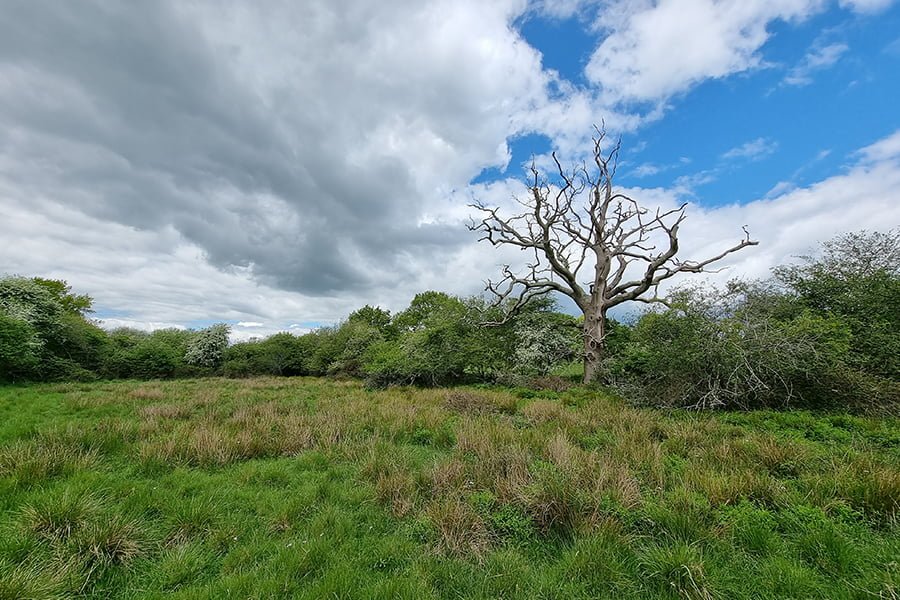
Trees and woodland are a cornerstone of the UK’s rural landscape, as well as playing an increasingly important role within our towns and cities. Adding to the known importance of trees in natural ecosystems, there is an overwhelming body of evidence that trees are beneficial to human health and wellbeing, environmental and ecosystem resilience, and the quality of life, place and economy in urban environments. But does this simply stop when they die?
Trees are themselves a landscape for others. They provide a home for fungi, arthropods, epiphytes, parasites, mammals and birds, most of which aren’t reliant on the host tree being dead or alive. Indeed, some species, the saprophytes, have evolved to rely solely on dead and dying wood for survival. So why then, with our learned understanding of the benefits of trees, do we protest against the presence of those that die outside of a rural or woodland setting?
Dead trees can pose a risk to people and property, but most tree failures occur during extreme weather events or in response to deep-seated decay that can take decades to exceed the inherent safety tolerances of the average tree. It is therefore perfectly reasonable to expect that a tree that has succumb to old age or physiological disease and is otherwise in good structural condition, could be managed and retained safely for decades after it dies. A common attitude is that dead, dying and fallen trees must be removed, reducing their skeleton to woodchip with never aforethought for the carbon they store or the ecology that does or could inhabit them. This perhaps, is a less-prosperous legacy of the Victorians whose enthusiasm for formality has led to centuries of sanitisation for our urban green space; but at what cost?
There will of course be trees, both living and dead, that present an unacceptable risk and where intervention must be taken. Likewise, there will be locations where retaining dead trees or dead wood, irrespective of the risks they pose, is impractical or undesirable. It is not therefore proposed, that deadwood habitats should take priority over common sense. Just that there needs to be a collaborative shift away from a default of ‘remove and destroy’ to a hierarchy of intervention that seeks to minimise movement and processing of deadwood.
In reality, the retention of dead trees in-situ may only be possible in a minority of cases, but our landscapes are not short of places to store deadwood if only our land management practices allowed it. This premise is comparable to the recent upsurge in growing wildflowers and rough grassland on roadside verges, instead of high intensity mowing regimes. The logical next step is to allow these places even more wild freedom, part of which could be the retention of deadwood. Changes to the management practices in parks and private nature spaces should also be in the vanguard of change, with the public educated on the value of deadwood habitats to ensure they are revered instead of rejected as defective parts of our landscapes.
But whilst the current value of dead trees might be highest as firewood, a new language and set of global objectives is emerging that might put the ecological benefits of retaining dead and dying trees back on top. Dead trees have a leading part to play in the delivery of the UK’s nature recovery plan; in locking up the carbon they have captured over their lifetime for longer; in delivering ecosystem services; and in helping deliver biodiversity net gain, all of which present opportunities to preserve existing benefits and create new ones in their afterlife. Importantly, such movements have increasing political and social backing which has the potential to drive real and lasting change and we can all play our part. So the next time you’re presented with an opportunity to bin, chip or burn a piece of deadwood, consider your options and give nature a helping hand by retaining it as a landscape for others.
Robin Grimes
Senior Arboricultural Consultant
To read more from our Arboricultural team click here or to learn about our projects click here.








